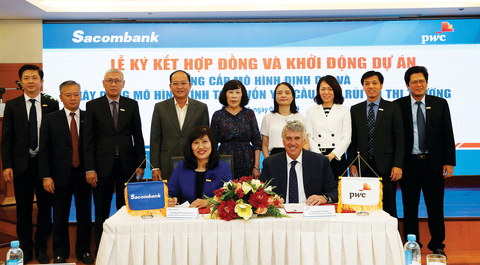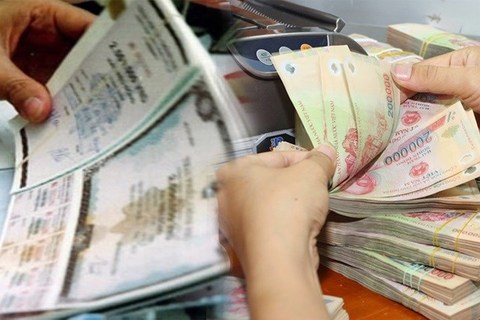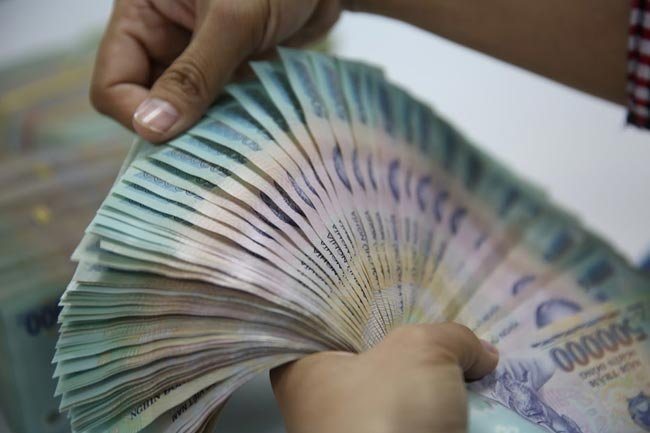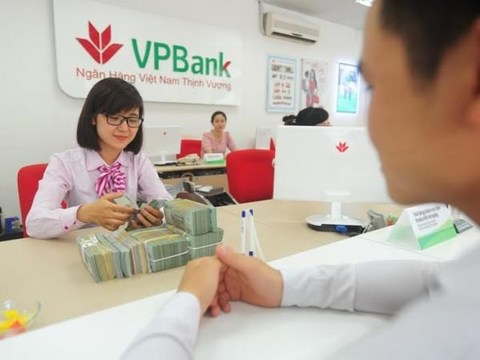The Dong re-appreciation: A predicted scenario
The Dong re-appreciation: A predicted scenario
In recent days, the U.S. dollar/dong exchange rate has continuously declined on both the official and the free markets after a strong rise in April and May. What is the cause of this development and what the situation will be like in the future?
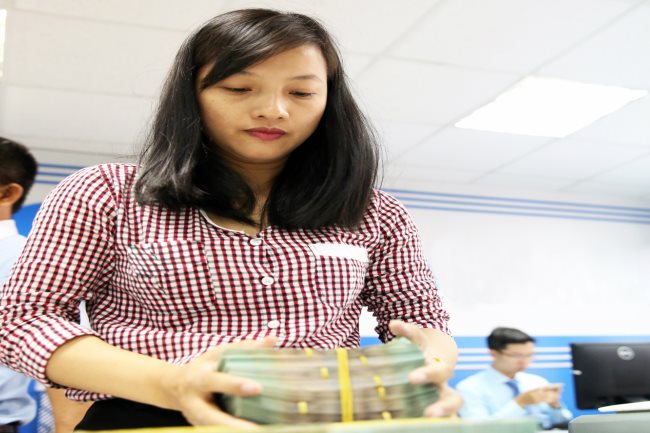
The central rate announced by the State Bank of Vietnam on June 24 is VND23,052 per dollar, down VND12 per dollar against the rate in the previous month. This is quite a surprise, given the continuous rise of the rate in the first five months of the year. On the unofficial market, the U.S. dollar price also plunged by VND150 per dollar versus the rate in May.
Global market developments
The U.S. dollar price on the international market has dropped in recent weeks after a strong rise in May. The U.S. Dollar Index has fallen from 98 to 96, down more than 2% since early June. Earlier, investors have rushed for the U.S. dollar as a safe asset against the risk of the Sino-U.S. trade war. However, the U.S. Federal Reserve (Fed) is the cause of the recent fall of the dollar.
The world’s largest central bank has recently hinted at a reversal of its monetary tightening policy whereby it would stop raising or would even reduce the U.S. dollar interest rate. During its June 19-20 meeting, Fed still kept the policy interest rate for the U.S. dollar at 2.25-2.5%. However, it also hinted at one rate cut in 2020, while the market expects the rate cut this year.
U.S. President Donald Trump has continuously criticized Fed and its chairman Jerome Powell for the rate hike policy. Trump argued that the United States is in a disadvantageous position in the trade war when the central banks of other countries have continued to ease the monetary policy, reduce interest rates and devalue their currencies, and constantly expected a weak dollar to support exports. Therefore, the Fed may be put under more pressure for its monetary policy and the U.S. dollar could hardly go up strongly.
Meanwhile, the Chinese yuan has regained stability after a period of strong depreciation. After surpassing 6.9 and peaking nearly 6.94 yuan per dollar, the yuan/U.S. dollar rate has dropped, at times to the lowest level of 6.84 yuan per dollar when U.S. President Donald Trump and Chinese President Xi Jinping met on the sidelines of the G20 Summit in Japan in late June, which now opened the way for the resumption of trade negotiations and reduced the risk of escalation of the trade war between the two countries.
According to analysts, the People Bank of China can hardly allow the yuan/U.S. dollar rate to surpass seven yuan per dollar, the psychological resistance level that has existed for years, because this could not only trigger a strong capital flight from China but also become a reason for the United States to accuse China of currency manipulation and impose stronger punitive sanctions.
The depreciation of the U.S. dollar and the appreciation of the Chinese yuan have partly helped stabilize the dong more, as the central rate is based on a basket of currencies where the dollar and the yuan have a significant impact. The United States and China are Vietnam’s two largest trade partners. Vietnam enjoys the largest surplus in trade with the former while the country suffers the largest deficit in trade with the latter.
Policy move
In late May, the U.S. Treasury Department put Vietnam in the list of countries being monitored for possible currency manipulation. The department has three criteria to assess if a country manipulates its currency: a surplus of over US$20 billion in bilateral trade with the U.S., a current account surplus of over 2% of gross domestic product (GDP) and one-sided intervention in foreign exchange, i.e. net purchases of foreign currency over six consecutive months equivalent to 2% of GDP.
According to the Treasury Department, Vietnam has met two of the three criteria, with a surplus of over US$20 billion in bilateral trade with the U.S. and a current account surplus of over 2% of GDP. However, Vietnam has not met the third criterion, as the country’s net foreign currency purchases in 2018 is equivalent to only 1.7% of GDP.
It should be noted that the net foreign currency purchases by the State Bank of Vietnam (SBV) in 2018 is US$6 billion, equivalent to only 1.7% of GDP, because the Treasury Department included the value of forward contracts in its calculation. The SBV had sold forward contracts to commercial banks by the end of the year to ease the exchange rate pressure at the year’s end. If the value of those forward contracts were not included in the calculation, the net foreign currency purchases would be equivalent to approximately 2.5% of GDP in 2018.
This year, with the GDP growth target of 6.6% and the GDP value in current prices estimated at some US$257 billion, the net foreign currency purchases of US$8.35 billion in the year to date is equivalent to over 3.2% of GDP, meeting the third criterion. Therefore, the SBV may have to sell foreign currencies or use forward contracts for foreign currency sale to reduce this ratio so as to avoid the possibility of Vietnam being accused of currency manipulation.
This is a necessary move in view of the two remaining criteria. In specifics, Vietnam’s trade surplus with the U.S. in 2018 is US$39.5 billion, while the figure in the first five months of this year is already US$16.8 billion and Vietnam is becoming one of the leading exporters to the U.S. So, the trade surplus of US$20 billion with the U.S. could possibly be surpassed soon.
Furthermore, the continuous strong inflow of foreign direct investment (FDI) capital is an important factor to help stabilize the domestic foreign exchange market. In the first five months of the year, Vietnam attracted US$9.1 billion in fresh and additional FDI capital, soaring 27% year-on-year, and the amount of FDI capital disbursed was US$7.3 billion, up 7.8%. Foreign indirect investment capital reached US$7.65 billion, 2.8 times higher than the year ago period.
After strong net purchasing foreign currency in the first months of the year to increase foreign reserves, which has withdrawn a large amount of foreign currency from the market and partly affected the exchange rate, in the coming time the SBV should exercise more caution in its monetary and exchange rate policies to avoid the U.S. accusation of currency manipulator. So, the bank may have to sell out part of the foreign currency purchased, a move that could make the dong appreciate again or at least restrict the strong increase in the U.S. dollar/dong rate.




